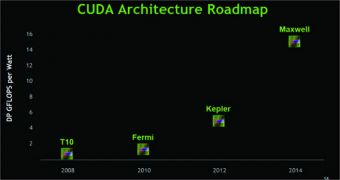The Kepler architecture was initially targeted for a late 2011 launch, but instead it has only made it into the retail early this summer. That’s a serious half year delay and it seems that the company’s choice to increase the complexity of its architectures will only make matters worse.
As many were talking about Nvidia’s troubles with Kepler yields and manufacturing, we were always the ones to dismiss such rumors and explain that the company’s main problem is TSMC’s inability to deliver enough 28nm chips and not the fact that too many were defective.
This is true up to a point. That point is the even more complex GK110 GPU that’s slated for a late December 2012 launch.
Despite Nvidia’s desire to have the GK110 available before Intel’s Xeon Phi and AMD’s FirePro W9000 series and the S9000 series make any serious impact, this is not going to happen in the next four months.
Nvidia barely made it and got decent yields with the 3.5-billion transistors Kepler and it is very unlikely that the GK110 will be able to fit in the acceptable yields range.
Sure, TSMC is improving the 28nm process and faster GK104 versions will likely surface around next spring, but a 7-billion transistors GPU won’t have much to gain from such improvements.
There is reportedly a slim chance that we will see a faster Kepler desktop GPU early next summer that will probably be called GTX780, but Nvidia’s main focus is improving yields of its high-end and high margins GK110 chip.
Not only does the company need to make the GK110 work, it actually needs to learn how to deal with such complex designs, as the Maxwell architecture is supposed to be even more complex and it will also integrate an 64-bit ARM architecture that will only increase the complexity.
By now, it is clear that Maxwell can’t possibly be ready next year. We wish Nvidia would surprise us on this, but the reality is that it should at least be ready for AMD’s Sea Islands Radeon 8000 series with a Kepler refresh.
A competitive edge from Nvidia’s GPU is the only thing that would make AMD launch the Radeon 8000 series with somewhat affordable prices.

 14 DAY TRIAL //
14 DAY TRIAL //